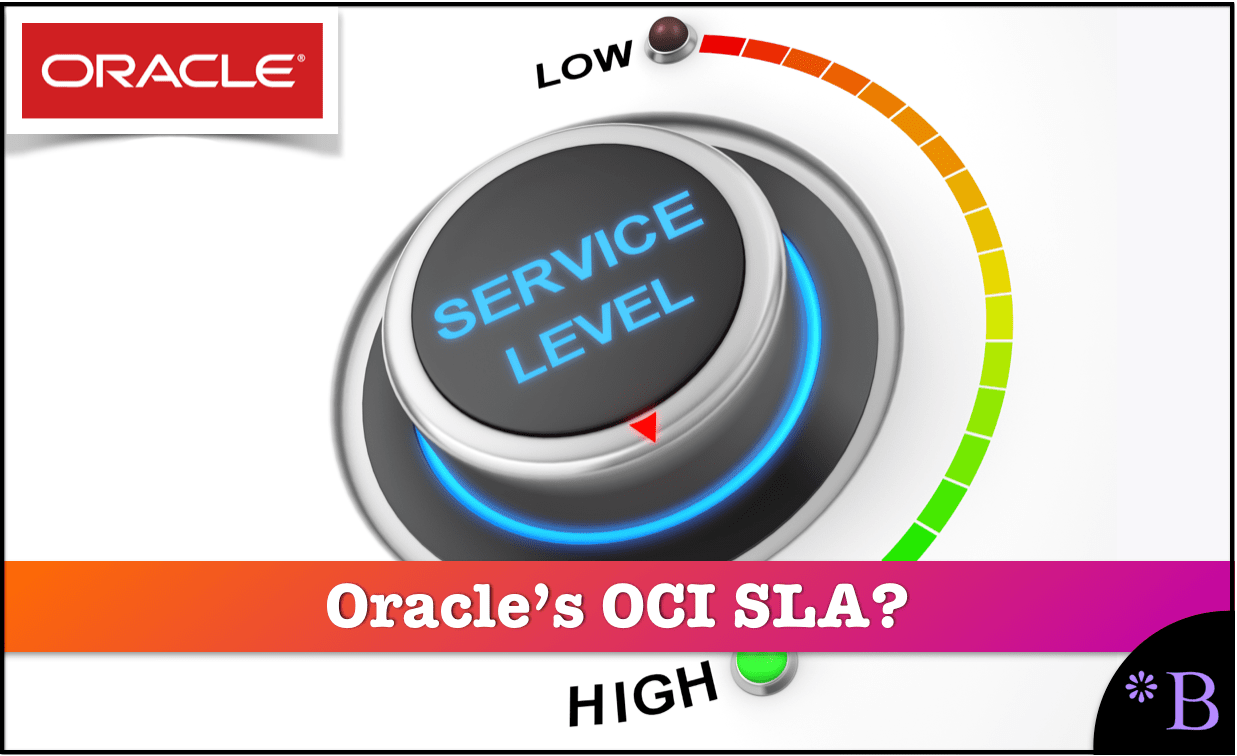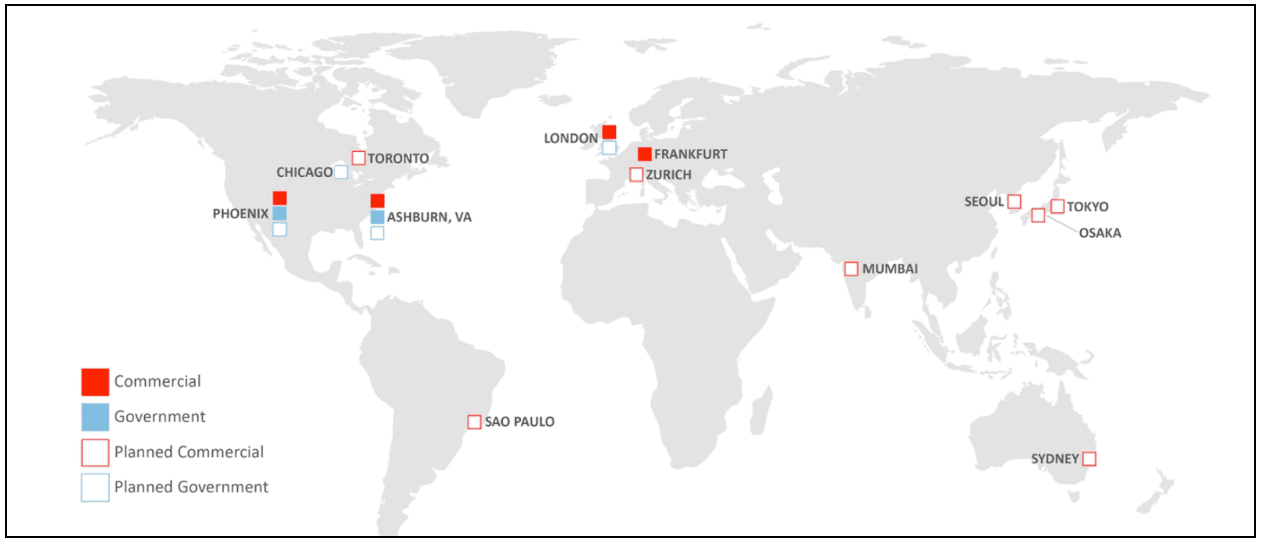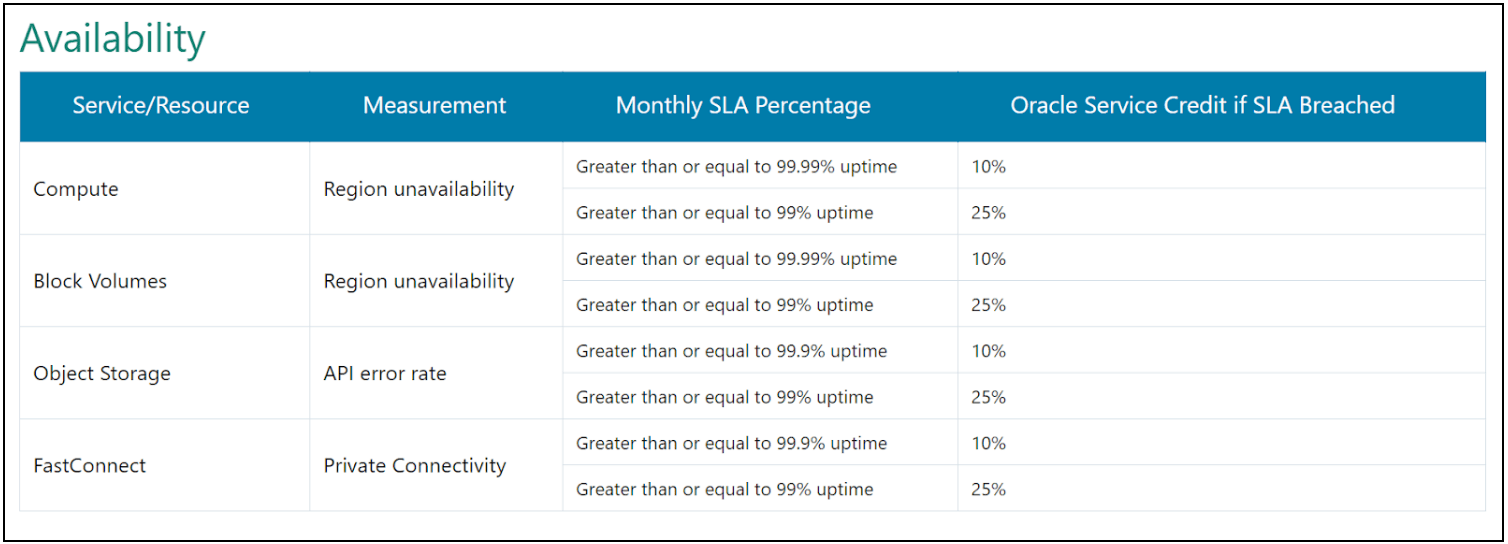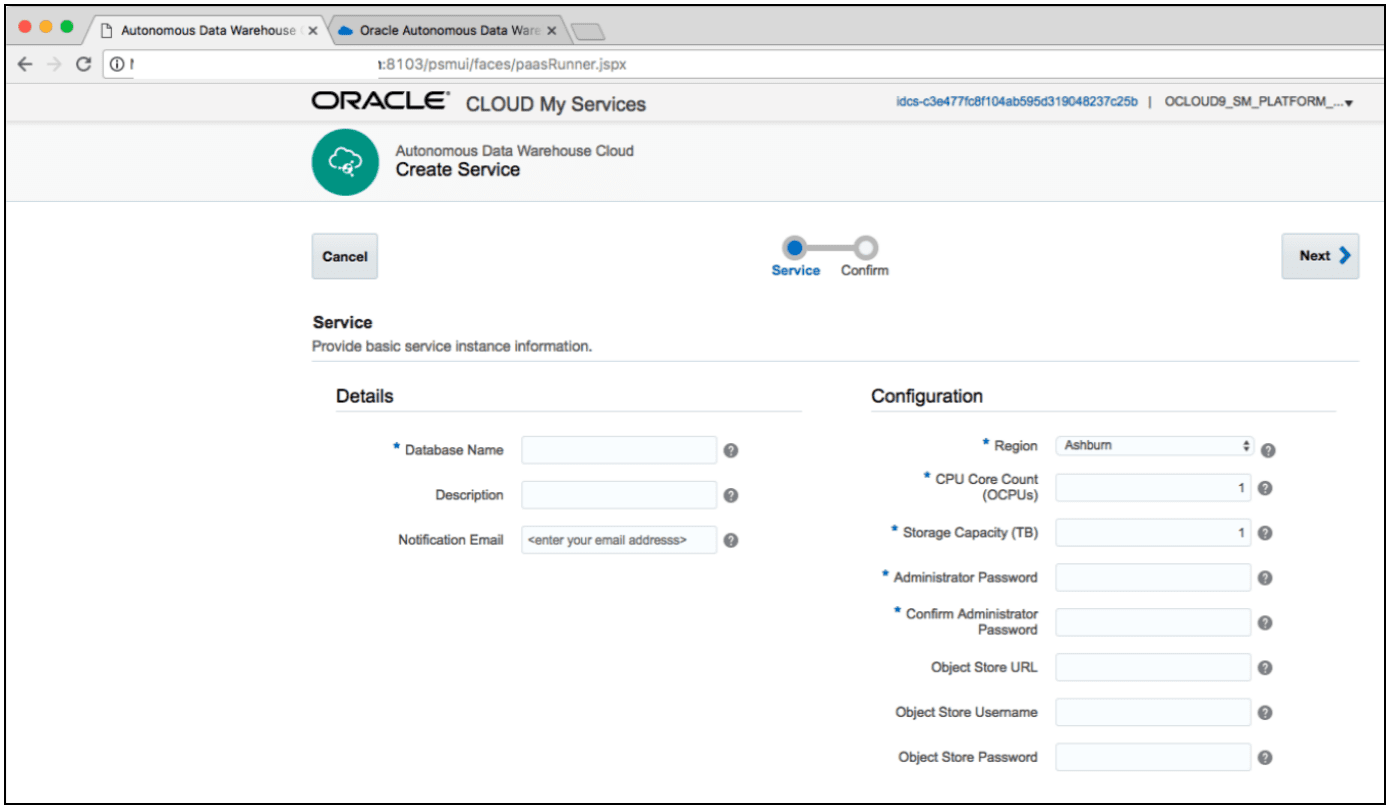How to Understand Oracle Cloud Infrastructure’s SLA
Executive Summary
- How Oracle Cloud Infrastructure works regarding its target service availability level.
- Considering the big picture regarding OCI and service level.

Introduction
Oracle Cloud Infrastructure (OCI) provides a range of IaaS and PaaS offerings. The graphic below is an overview.
Our References for This Article
If you want to see our references for this article and other related Brightwork articles, see this link.
Lack of Financial Bias Notice: The vast majority of content available on the Internet about Oracle is marketing fiddle-faddle published by Oracle, Oracle partners, or media entities paid by Oracle to run their marketing on the media website. Each one of these entities tries to hide its financial bias from readers. The article below is very different.
- This is published by a research entity, not some dishonest entity that is part of the Oracle ecosystem.
- Second, no one paid for this article to be written, and it is not pretending to inform you while being rigged to sell you software or consulting services. Unlike nearly every other article you will find from Google on this topic, it has had no input from any company's marketing or sales department. As you are reading this article, consider how rare this is. The vast majority of information on the Internet on Oracle is provided by Oracle, which is filled with false claims and sleazy consulting companies and SAP consultants who will tell any lie for personal benefit. Furthermore, Oracle pays off all IT analysts -- who have the same concern for accuracy as Oracle. Not one of these entities will disclose their pro-Oracle financial bias to their readers.
 Global Footprint
Global Footprint
Currently, OCI has 4 regions in Phoenix, Ashburn, London, and Frankfurt. The graphic below is an overview of OCI’s current and planned commercial and government regions.

Service Availability
OCI has a target service availability level, or target service uptime, of 99.5%. Important to understand that target service uptime does NOT guarantee 99.5% availability. Depending on the specific service you use, Oracle offers service credits if your SLA is breached, as shown in the table below:

How Availability is Measured
Following the end of each calendar month of the applicable services period, Oracle measures the service uptime over the immediately preceding month by dividing the difference between the total number of minutes in the monthly measurement period and any unplanned downtime by the total number of minutes in the measurement period and multiplying the result by 100 to reach a percent figure.
Outages
Outages are defined as any time during which the Oracle cloud services are not available. Note the following exceptions:
- Outages caused by scheduled and announced maintenance (planned downtime).
- Unavailability of third-party services, including hosting or connectivity providers.
- Hacker, malware, and denial of service attacks.
- Outages caused by failures or fluctuations in electrical, connectivity, network, or telecommunications equipment or line. (Caution) The above outages are NOT considered unplanned and therefore do not count toward any service credits.
Restrictions
There are many restrictions on specific OCI services. This review will discuss restrictions related to one service in detail: The autonomous database service.
Available only on Exadata: Oracle autonomous database service is comprised of Oracle database 18c Enterprise Edition with all database options and management packs included from a software packaging perspective, Oracle Exadata X7-2 as the deployment platform, and the Oracle cloud automated database and database operations components (scripts, best practices, procedures, etc.).
Multi-Tenant only: Oracle Autonomous Database only dedicates OCPUs (equivalent to an Intel Xeon physical core) and a single PDB (Pluggable Database) each Oracle Cloud client. The memory, flash cache, and other resources on an Oracle Exadata system are not dedicated. Oracle will decide who and how many other clients share the PDB resources available within a single Exadata machine.

You will not even know how many additional clients are sharing your Exadata machine with a multi-tenant configuration. Although Oracle can control data access and PDB separation from a security perspective, no advertised purchasing option allows you to dedicate memory and flash cache to specific PDBs (only OCPUs are dedicated).
Hidden costs
There are many hidden costs associated with OCI. In this review, we will cover a couple only.
FastConnect: Per hour charges
FastConnect is a private connectivity service offered by Oracle OCI between customer DC and Oracle public cloud using the Equinix Cloud Exchange inside an Equinix IBX data center. This connection provides a private data connection that bypasses the public Internet. FastConnect is often used when Internet latency is too high between the customer and the nearest Oracle region. There are many costs involved in this service. For instance, Oracle FastConnect is charged by the port hour regardless of data transfer volume.
Autonomous DB SLA
Oracle offers two configuration choices for Autonomous Database: Enterprise and Mission Critical. The 99.995% availability SLA is ONLY true for the Mission Critical configurations, which could cost clients up to 2X the monthly subscription costs. This increased cost estimate is based on a standby database requirement, which will double the infrastructure and storage and, therefore, could double the cost if there are no additional discounts.
Conclusion
It isn’t easy to get the real story on Oracle OCI SLA information as almost all the sources on this topic are connected to Oracle. Brightwork Research & Analysis provides completely independent information on this subject and many other Oracle topics.